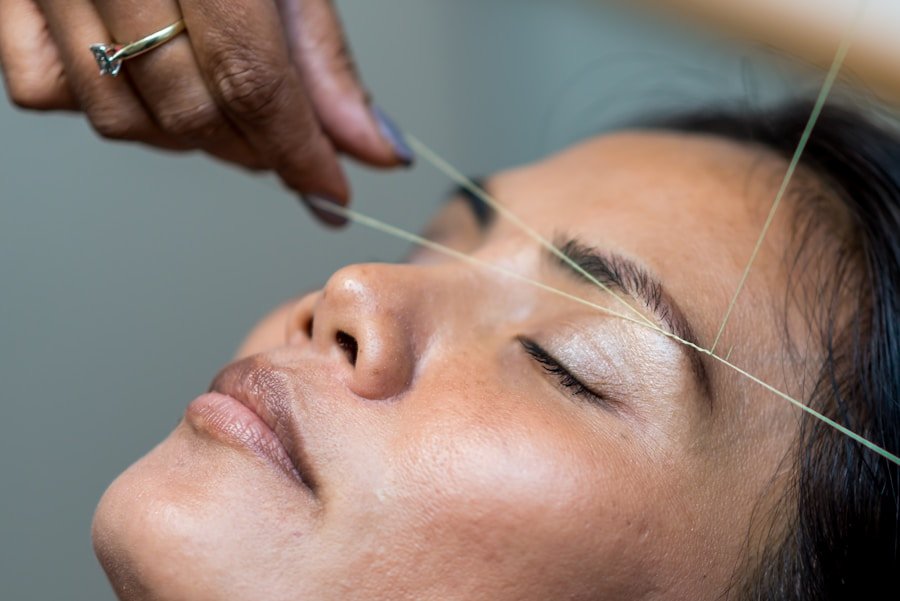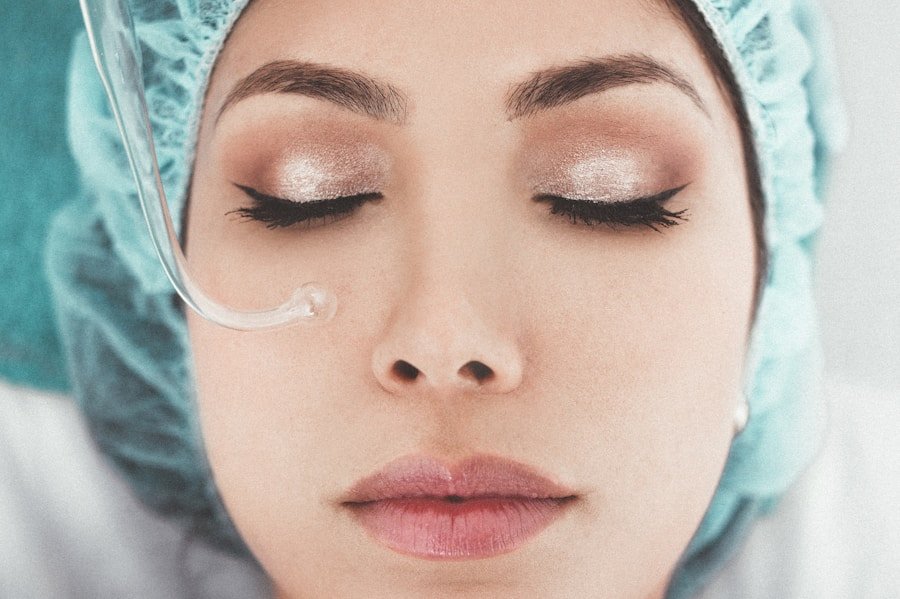Face massage has emerged as a popular practice in the realm of skincare, and for good reason. The benefits of this simple yet effective technique extend far beyond mere relaxation. By stimulating blood circulation, face massage promotes a healthy glow that can transform dull skin into a radiant canvas.
The increased blood flow not only nourishes the skin but also aids in the removal of toxins, contributing to a clearer complexion. Furthermore, the gentle pressure applied during a massage can help to alleviate tension in the facial muscles, which may lead to a more youthful appearance by reducing the visibility of fine lines and wrinkles. In addition to its physical benefits, face massage also offers psychological advantages.
The act of massaging the face can be a meditative experience, allowing individuals to unwind and de-stress. This relaxation can have a positive impact on overall skin health, as stress is known to exacerbate various skin conditions, including acne and eczema. By incorporating face massage into one’s skincare routine, individuals not only invest in their skin’s appearance but also prioritize their mental well-being.
Thus, the importance of face massage transcends mere aesthetics; it is a holistic approach to achieving radiant skin.
Key Takeaways
- Regular face massage can improve blood circulation, promote lymphatic drainage, and help achieve radiant skin.
- When choosing a massage oil or cream, consider your skin type and any specific concerns such as acne or aging.
- Effective face massage techniques include gentle circular motions, tapping, and lymphatic drainage movements.
- Target problem areas such as the forehead, under eyes, and jawline to improve complexion and reduce puffiness.
- Incorporate facial massage into your skincare routine by doing it 2-3 times a week for best results.
- Additional tips for maintaining radiant skin include staying hydrated, getting enough sleep, and protecting your skin from sun damage.
Choosing the Right Massage Oil or Cream
Choosing the Right Oil for Your Skin Type
For those with dry or sensitive skin, oils such as jojoba or almond oil are excellent choices due to their moisturizing properties and gentle nature. These oils are rich in vitamins and fatty acids, which help to hydrate the skin and create a protective barrier against environmental stressors.
Considering Ingredients and Essential Oils
In addition to considering skin type, it is essential to pay attention to the ingredients in the chosen product. Natural oils and creams that are free from synthetic fragrances and harsh chemicals are preferable, as they are less likely to irritate the skin. Essential oils can also be incorporated for added benefits; for instance, lavender oil is known for its calming properties, while rose oil can help improve skin tone and texture.
Enhancing the Massage Experience and Skin Health
Ultimately, choosing the right massage oil or cream not only enhances the effectiveness of the massage but also contributes to overall skin health.
Techniques for Effective Face Massage

Mastering effective face massage techniques can significantly enhance the results achieved through this practice. One popular method is the effleurage technique, which involves long, sweeping strokes across the face. This technique is particularly beneficial for promoting relaxation and increasing blood circulation.
Starting from the center of the face and moving outward helps to stimulate lymphatic drainage, reducing puffiness and promoting a more sculpted appearance. Additionally, incorporating circular motions around the cheeks and forehead can further enhance relaxation while providing a gentle exfoliation effect. Another effective technique is tapping or percussion, which involves using the fingertips to gently tap on various areas of the face.
This method stimulates collagen production and can help improve skin elasticity over time. It is particularly useful for targeting areas that may show signs of aging or fatigue. Combining these techniques with varying pressure levels allows individuals to customize their massage experience according to their preferences and needs.
By incorporating these diverse techniques into their routine, individuals can achieve optimal results and enjoy a rejuvenated complexion.
Targeting Problem Areas for a Glowing Complexion
While a full-face massage offers numerous benefits, targeting specific problem areas can yield even more pronounced results. Common concerns such as puffiness around the eyes, sagging skin along the jawline, and dullness in the cheeks can be effectively addressed through focused techniques. For instance, using gentle pressure around the eye area with the ring finger can help reduce puffiness and dark circles.
This delicate touch is essential, as the skin around the eyes is particularly thin and sensitive. Similarly, addressing sagging skin along the jawline can be achieved through upward strokes that lift and firm this area. By applying slightly more pressure while massaging along the jawline and chin, individuals can promote lymphatic drainage and improve contouring.
For those struggling with dullness in their complexion, focusing on the cheeks with circular motions can stimulate blood flow and encourage a healthy glow. By honing in on these problem areas during a facial massage, individuals can tailor their approach to meet their specific skincare needs.
Incorporating Facial Massage into Your Skincare Routine
Integrating facial massage into an existing skincare routine can be a seamless process that enhances overall effectiveness. Ideally, individuals should perform facial massages after cleansing and before applying serums or moisturizers. This timing allows for better absorption of products while ensuring that any impurities are removed beforehand.
A clean canvas not only maximizes the benefits of massage but also prevents potential breakouts caused by trapped dirt or oil. To establish a consistent routine, individuals may choose to dedicate a few minutes each day or several times a week to facial massage. Setting aside time for this practice can transform it into a self-care ritual that promotes relaxation and mindfulness.
Additionally, using tools such as jade rollers or gua sha stones can elevate the experience by providing added benefits such as cooling effects and enhanced lymphatic drainage. By making facial massage a regular part of their skincare regimen, individuals can enjoy long-term improvements in their skin’s appearance and texture.
Additional Tips for Maintaining Radiant Skin

Hydration and Nutrition: The Foundation of Healthy Skin
Hydration plays a pivotal role in achieving healthy skin; drinking plenty of water throughout the day helps to keep the skin plump and supple. Coupled with a balanced diet rich in antioxidants—found in fruits and vegetables—individuals can support their skin from within.
Protecting Your Skin from Environmental Aggressors
Foods high in omega-3 fatty acids, such as salmon and walnuts, also contribute to maintaining skin elasticity and reducing inflammation. Moreover, protecting the skin from environmental aggressors is essential for preserving its radiance. Daily application of sunscreen is crucial in preventing premature aging caused by UV exposure.
A Comprehensive Approach to Skincare
Additionally, establishing a consistent nighttime skincare routine allows for overnight rejuvenation; incorporating products with retinol or hyaluronic acid can further enhance skin texture and hydration levels. By combining these practices with regular facial massage, individuals can cultivate a comprehensive approach to skincare that promotes lasting radiance. In conclusion, face massage serves as an invaluable tool in achieving radiant skin while offering numerous physical and psychological benefits.
By choosing the right products, mastering effective techniques, targeting specific problem areas, and incorporating this practice into a broader skincare routine, individuals can unlock their skin’s full potential. Coupled with additional tips for maintaining healthy skin, facial massage becomes an integral part of a holistic approach to beauty that prioritizes both appearance and well-being.
If you’re looking to enhance your self-care routine beyond face massages, you may want to try some DIY natural hair masks for healthier, shinier hair. These easy recipes are a great way to nourish your hair and promote overall hair health. Check out the article here for some fantastic hair mask ideas.
FAQs
What are the benefits of face massage?
Face massage can help improve blood circulation, reduce puffiness, promote lymphatic drainage, and relax facial muscles. It can also help to improve the overall appearance and health of the skin.
How often should I do a face massage?
It is recommended to do a face massage 2-3 times a week for best results. Overdoing it can potentially irritate the skin, so it’s important to give the skin time to rest between sessions.
What products should I use for a face massage?
You can use a facial oil, serum, or moisturizer to help your hands glide smoothly over the skin during the massage. It’s important to choose products that are suitable for your skin type and do not cause any irritation.
What techniques can I use for a face massage?
There are various techniques for face massage, including gentle circular motions, tapping, and acupressure. It’s important to use light pressure and be gentle with the skin to avoid causing any damage.
Are there any areas of the face to avoid during a massage?
It’s best to avoid massaging directly over any active breakouts, cuts, or irritated areas of the skin. Additionally, it’s important to be gentle around the delicate eye area to avoid causing any damage.





